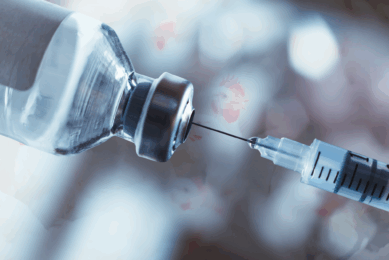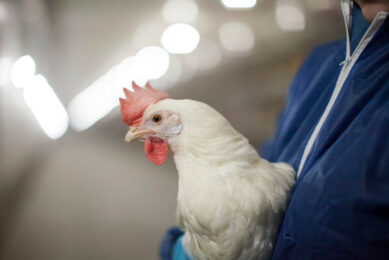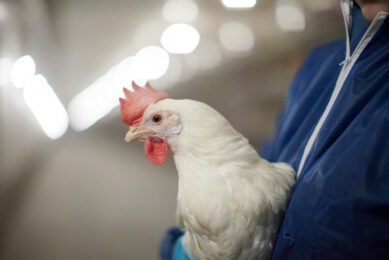Solutions to help reduce the use of antibiotics and antimicrobial resistance
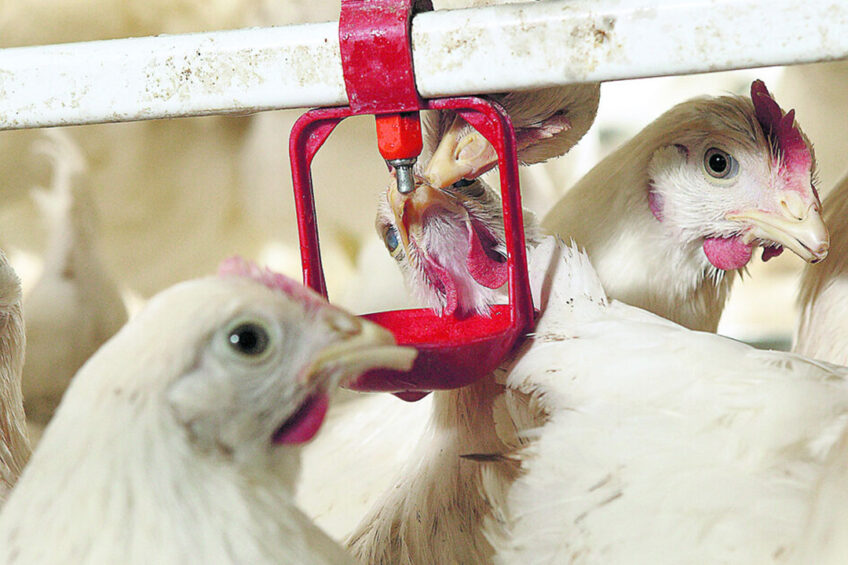
Despite global bans on antibiotic use in feed, antimicrobial resistance is still a problem worldwide. The use of MRF in poultry diets can reduce the need for antibiotics and improve the sensitivity of bacteria resistant to antibiotics.
Antibiotics are a type of antimicrobial product used to treat or prevent bacterial infection in humans and animals. They inhibit the growth of bacteria or kill them, stopping the infection and the bacteria from being spread to others. However, the overuse and misuse of antimicrobials in human health care and the agricultural industry are believed to be a major driver behind the development of antimicrobial resistance of bacteria. The World Health Organization’s (WHO) definition of antimicrobial resistance is “when bacteria, viruses, fungi and parasites change over time and no longer respond to medicines, making infections harder to treat and increasing the risk of disease spread, severe illness and death.”
Antimicrobial resistance is considered to be a significant threat to public health throughout the world. In the WHO European region, it is estimated that bacteria resistant to antibiotics cause more than 670,000 infections and directly result in approximately 33,000 deaths each year. The Centre for Disease Control and Prevention (CDC) reported in 2019 that more than 2.8 million people in the United States became ill with antibiotic-resistant infections each year, and more than 35,000 people died as a result. The burden on economies and health systems is considerable as antimicrobial resistance causes extended hospital stays and more costly and intensive care, affecting not only the productivity of patients but also that of their caretakers.
Because of the increase in global demand for animal protein, farming has become more intensive. This has led to increased stress on animals and an increase in the use of antibiotics to support their performance. The use of antibiotics in the production of livestock contributes to the emergence of antimicrobial resistance in bacteria, which can have a significant implication on human health. This is because antimicrobial-resistant bacteria in livestock can be transmitted to humans through direct contact, the environment and food products.
Bans on antibiotics are not enough
The increasing awareness and pressure about antimicrobial resistance and the effects of using antibiotics in animal feed has led many countries to ban the use of antibiotic growth promoters in animal feeds, the first being Sweden in 1986. However, these bans are not enough to stop the increased emergence of antimicrobial resistance. A recent study looking at chicken, cattle and swine antimicrobials sales has projected that sales will reach 106,680 tonnes by 2030 from 94,802 tonnes in 2017 in 41 countries. In many countries, the use of routine antibiotics in animals is not restricted. For example, Russian farmers can use antibiotics in animal feeds virtually unrestricted as long as the levels of antibiotic residues in the finished product are below permitted levels.
However, more countries across the globe are tightening their restrictions. In September 2021, Russia said it intends to increase controls over the use of antibiotics in animal feeds. Adding antibiotics and selling feeds containing antibiotics will be banned if the bill is approved, with the exception of farmers with a prescription from a veterinarian or a license.
Need for an alternative to support gut health
Subtherapeutic antibiotics are used in animal feed to address gut health issues and promote growth to increase production. Subtherapeutic antibiotics increase growth rate, improve feed conversion ratio and reduce mortality in poultry. Therefore, to assist with the move to antibiotic-free production, an alternative way to support the gut health of the bird is needed to maintain growth. Optimal gut health can be attained by supporting the diversity and balance of the gut microbiome through gut health supplements.
Figure 1 – In many countries, the use of routine antibiotics in animals is not restricted.
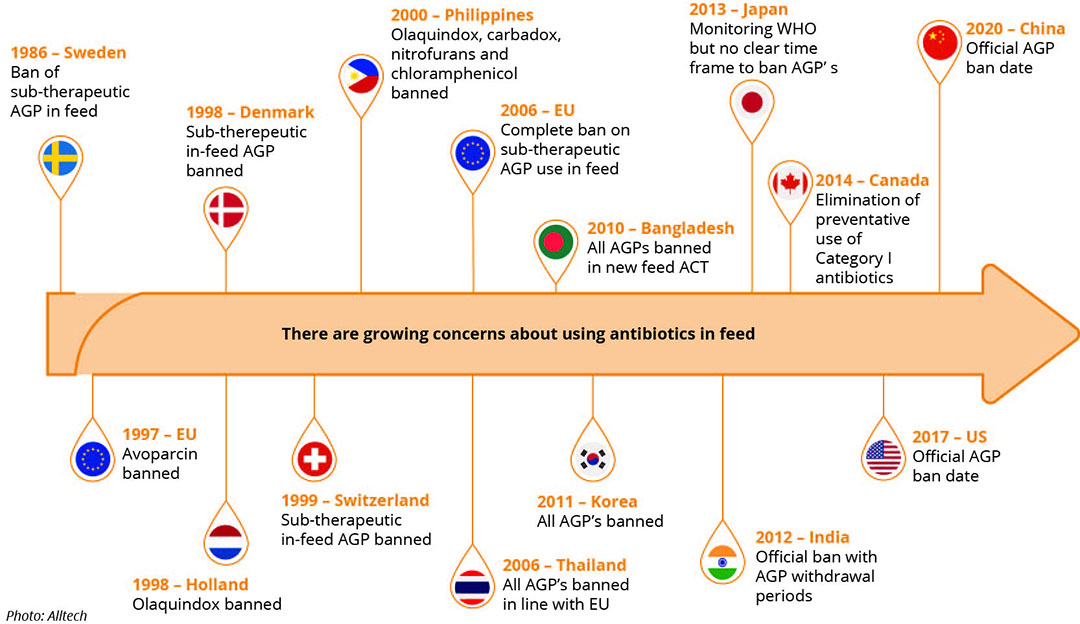
MRF in poultry diets
Since subtherapeutic antibiotics were banned in many countries, mannan-oligosaccharides from Saccharomyces cerevisiae have been increasingly used in poultry feed because of their ability to bind pathogens, reduce gut colonisation, and support the health and performance of the bird. Further refinements of mannan-oligosaccharides have produced mannan-rich fractions with improved benefits. Actigen is a unique, second-generation, mannan-rich fraction (MRF) bioactive product derived from Saccharomyces cerevisiae.
Mannan-rich fractions (MRF) have been studied for their ability to promote microbiota diversity and they can alter the overall composition of the bacterial community. Consistent changes in the bacterial community of broilers in response to MRF supplementation have been demonstrated, and MRF in poultry diets can result in a shift in the microbiota, with Firmicutes decreasing and being replaced with increasing numbers of Bacteroidetes.
Effect of MRF on antimicrobial resistance
The resistancebank.org map of antimicrobial resistance shows that there are many areas with high levels of antimicrobial resistance, so there is a need to find ways to reduce resistance and increase bacterial sensitivity to antibiotics.
It has been found that resistant organisms can become more sensitive to antibiotics when in the presence of MRF. Researchers found that E. coli and Salmonella-carrying plasmids that conferred antibiotic resistance grew less in the presence of MRF. They also found that when antibiotics were used in the presence of MRF, they have a greater effect on the resistant organism, meaning that when antibiotics must be administered, using them alongside MRF may mean that a lower dose could be used. This better effectiveness of the antibiotic used with MRF could result in a reduction in the level of antibiotic resistant organisms in birds and in the environment, as well as the development of a diverse and balanced microbiome, preventing a cycle of antibiotic use.
Further work went on to show that MRF can modulate the basal cellular respiration of the bacteria, leading to changes in the bacterial metabolism and impacting the sensitivity of resistant bacteria to antibiotics. The metabolism and growth of resistant E. coli was changed when grown in the presence of MRF, resulting in increased sensitivity to antibiotics.
Increasing our understanding on how MRF can be used to develop new programmes for poultry to reduce the use of antibiotics and antimicrobial resistance is critical, as finding new classes of antibiotics is particularly difficult. The number of antimicrobial agents discovered has been in sharp decline since the 1990s. The main driver in the development of antimicrobial resistance in bacteria is the overuse and misuse of antimicrobials. Therefore, if we can support the gut health of birds through pathogen control and microbiome diversity to reduce the need for antibiotics with MRF and improve the sensitivity of bacteria resistant to antibiotics, we can help with the fight against antimicrobial resistance.




